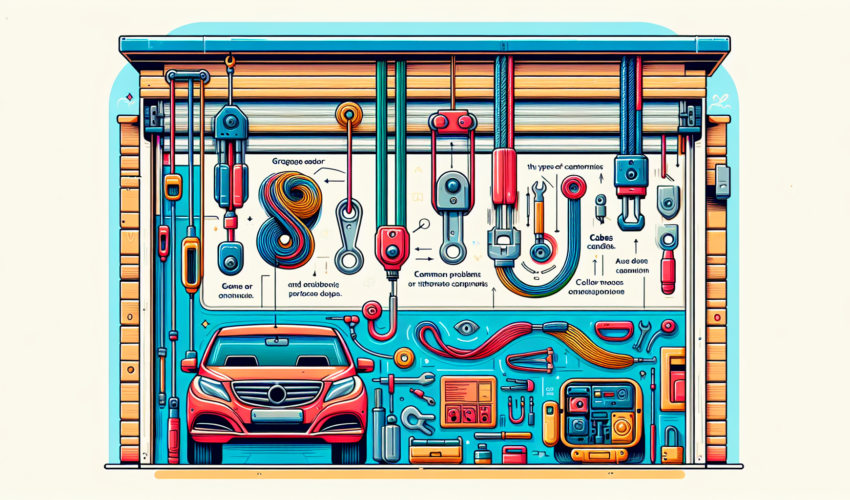Understanding Garage Door Cables: A Guide
Garage door cables are an essential component of your garage door system. These cables play a critical role in the safe and efficient operation of your garage door, helping to lift and lower it smoothly. Understanding the types, functions, and maintenance needs of garage door cables can help you ensure the longevity and safety of your garage door system.
Types of Garage Door Cables
There are mainly two types of cables used in garage doors:
- Lift Cables: These cables are attached to the bottom corners of the door and run up to the counterbalance system near the ceiling. Lift cables are crucial for the lifting mechanism, working in concert with the torsion or extension springs to raise and lower the door.
- Retaining Cables: Retaining cables are used in garage doors with extension springs. These cables run inside the springs and are designed to prevent the spring from flying off and causing damage or injury in case it breaks.
Importance of Garage Door Cables
Garage door cables are vital for a number of reasons:
- Safety: They ensure that the garage door operates smoothly and safely, preventing the door from crashing down which can lead to serious injuries or property damage.
- Balance and Support: Cables help to balance the weight of the door during operation, ensuring that the door opens and closes evenly on both sides.
- Durability: High-quality cables can enhance the lifespan of your garage door system by reducing wear and tear on other components.
Common Issues with Garage Door Cables
Over time, garage door cables can experience wear and tear or may become damaged, leading to several issues, including:
- Fraying or Rusting: Continuous use can cause cables to fray or rust, weakening their structure and potentially leading to failure.
- Slack: Improper tension can result in slack cables, affecting the door’s ability to open and close properly.
- Dislodging: Cables can become dislodged from their drum or pulley system, usually due to improper tension, misalignment, or damage to other components.
Maintenance and Replacement
Regular maintenance is key to ensuring the longevity and safe operation of your garage door cables. This includes:
- Inspection: Conduct regular inspections for signs of wear, fraying, or rusting. Also, check for proper tension and alignment.
- Lubrication: Lubricate cables and other moving parts of the garage door system regularly to reduce friction and wear.
- Professional Servicing: Have a professional inspect and service your garage door system annually to ensure everything is in optimal working condition.
In the event that you notice significant wear or damage to your garage door cables, it is advised to have them replaced by a professional. Working on garage doors can be dangerous due to the high tension of the springs and cables, so it is best left to experts.
Conclusion
Understanding the types, functions, and maintenance needs of garage door cables is crucial for any homeowner. These components are vital for the safe and efficient operation of your garage door system. By conducting regular maintenance and addressing any issues promptly, you can ensure the longevity and safety of your garage door. Remember, when it comes to repairs or replacements, it’s always best to consult with a professional.

